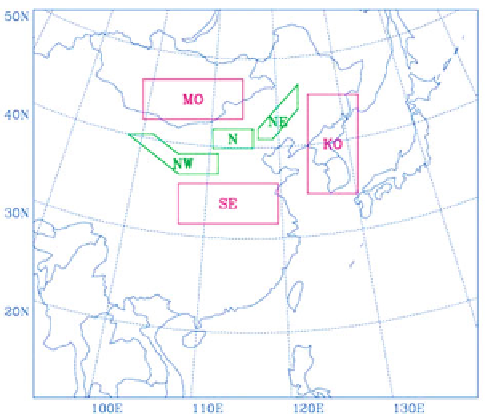Environmental Engineering Reference
In-Depth Information
15.4 Case Study 2: Potential Climate Influences of Large
Scale Reforestation at Regional Scale—The Green
Great Wall Project in Northern China
The Green Great Wall (GGW) forest shelterbelt project in northern China was
initiated in 1978 and still continues this day. The mass reforestation project aimed
at curbing the southward expansion of the desert, improving climate conditions,
and protecting the natural environments in the arid region. The forest shelterbelt is
about 7,000 km long zonally and 400-1,700 km wide (Fig.
15.7
). It stands along
the southern edge of the sandy lands, closely paralleling to the Great Wall, thereby
gaining the name of the Green Great Wall (GGW) (SFA
2006
). The project target
was to cover 60 % of the project areas by 2000, 85 % by 2020, and 100 % by
2050. When the GGW project is completed, forest coverage in the region will
increase from 5 % to 15 %. Until now, 25.07 million hectares of forests have been
planted. However, few studies have comprehensively evaluated the regional
environmental and ecological influences of this large effort (Liu et al.
2008a
,
b
).
The regional effects of GGW on climate and water were examined using a
modeling approach (Liu et al.
2008a
,
b
). Two simulations were conducted using
the National Center for Atmospheric Research (NCAR) regional climate model
(Version 3) (RegCM3) (Giorgi et al.
1993a
,
b
) for the period from January 1987 to
February 1988. One control simulation used present IGBP land cover data and the
Fig. 15.7 Location of Green Great Wall project and simulation domains. The three green boxes
in the middle represent the afforested areas in northwest (NW), north (N) and northeast (NE)of
China. The pink boxes are the surrounding areas in southeast (SE) China, Mongolia (MO) and
Korea (KO)

Search WWH ::

Custom Search